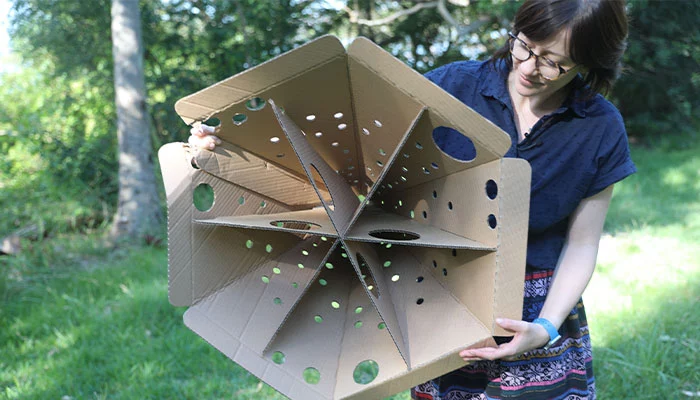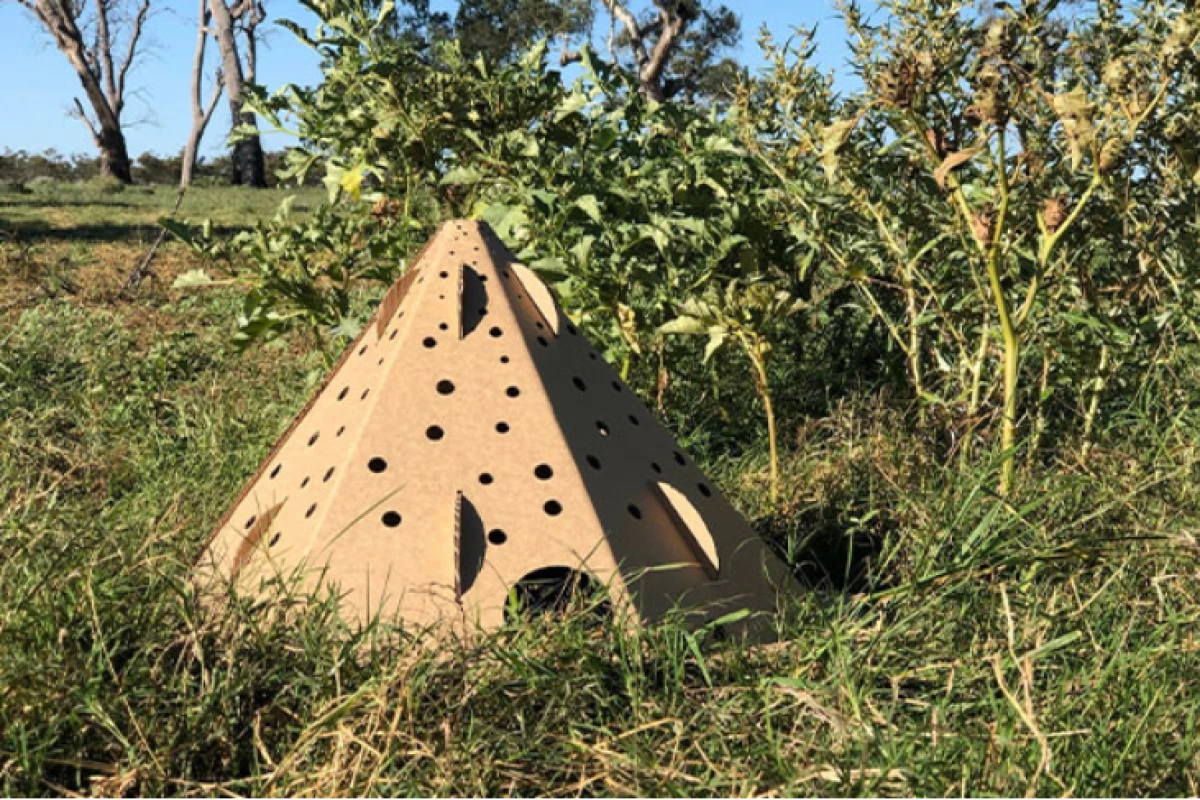Although a great number of wild animals were killed by Australia's recent bushfires, it is believed that even more may perish in the aftermath, as they have nowhere to hide from predators. Inexpensive new biodegradable "habitat pods," however, could give smaller creatures such hiding places.
The pods were designed by Macquarie University’s Dr. Alexandra Carthey. She was inspired to create them after witnessing ground-dwelling animals falling victim to predators after the bushfires had burned away the tall grasses, bushes and other vegetation that would usually provide cover for the creatures.
Each cardboard pod takes the form of a six-sided pyramid – well, sort of a pyramid – that sits 60 cm (23.6 in) tall.
Holes along the bottom allow small animals such as possums, bandicoots and lizards to access the interior, which is in turn divided into six compartments. Holes in the compartment walls let the animals move between them, plus additional holes in the exterior of the pod allow some sunlight to get through, aiding in the regrowth of vegetation beneath the structure.

Because the pods are flat-packable, they should be easy to transport from the factory and out into the wilderness. After being folded into shape, they can be anchored to the ground by placing rocks or sand bags onto a "skirt" running around their base – wooden stakes can also be driven through that skirt.
Carthey believes that instead of making permanent homes in the pods, most animals will use them more as a means of escaping predators, perhaps running from one pod to another as opposed to staying out in the open during the pursuit. And once the vegetation has regrown, the pods will simply biodegrade.
Plans now call for 200 of the pods to be deployed and monitored in the North Head Sanctuary, a region where 62 hectares (153 acres) of bushland were previously cleared in a controlled burn, to keep the bushfires from spreading. Motion- and heat-triggered wildlife cameras will keep track of creatures using the structures, over a one-year period.
The habitat pods may ultimately enter use alongside 3D-printed boxes that resemble tree hollows, which are being made by a team at Charles Sturt University to replace bird nesting sites which were destroyed by the fires.
Source: Macquarie University




